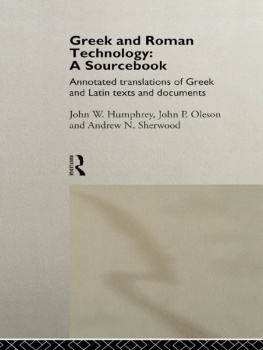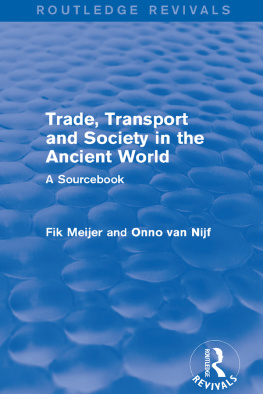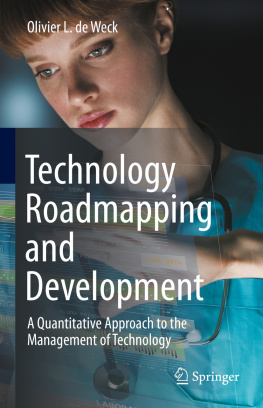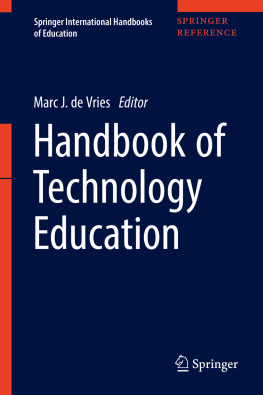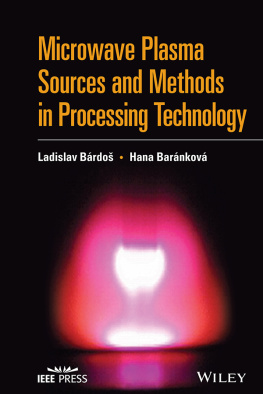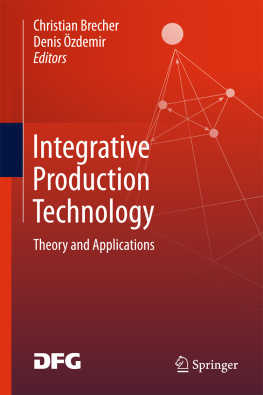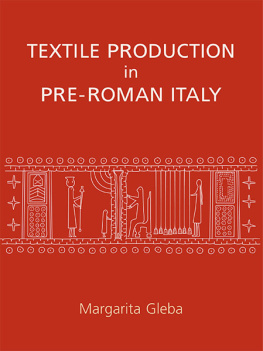TO LAURA, KAREN, SONJA, ERIC, ANGUS, JOHN, MIKE, ALLISON, MAC WITH LOVE AND GRATITUDE
List of Illustrations
Hero, Pneumatica 1.43. From W.Schmidt, Heronis Alexandrinus Opera, I: Pneumatica. Leipzig: Teubner, 1899, p. 205, fig. 44.
Hero, Pneumatica 1.43. From W.Schmidt, Heronis Alexandrinus Opera, I: Pneumatica. Leipzig: Teubner, 1899, p. 230, fig. 55.
Philo of Byzantium, Pneumatica 61. T.Beck, Philon von Byzanz. Beitrge zur Geschichte der Technik und Industrie 2 (1911) 73, fig. 21.
Hero, Dioptra 37. From H.Schoene, Heronis Alexandrinus Opera, III: Dioptra. Leipzig: Teubner, 1903, p. 309, fig. 115.
Drawing by C.Mundigler.
Hero, Pneumatica 1.15. From W.Schmidt, Heronis Alexandrinus Opera, I: Pneumatica. Leipzig: Teubner, 1899, p. 89, fig. 16.
Hero, Pneumatica 1.16. From W.Schmidt, Heronis Alexandrinus Opera, I: Pneumatica. Leipzig: Teubner, 1899, p. 93, fig. 17.
Hero, Pneumatica 1.1617. From W.Schmidt, Heronis Alexandrinus Opera, I: Pneumatica. Leipzig: Teubner, 1899, p. 98, fig. 18.
Hero, Pneumatica 1.21. From W.Schmidt, Heronis Alexandrinus Opera, I: Pneumatica. Leipzig: Teubner, 1899, p. 113, fig. 22.
Hero, Pneumatica 1.34. From W.Schmidt, Heronis Alexandrinus Opera, I: Pneumatica. Leipzig: Teubner, 1899, p. 163, fig. 35.
Hero, Pneumatica 1.38. From W. Schmidt, Heronis Alexandrinus Opera, I: Pneumatica. Leipzig: Teubner, 1899, p. 176, fig. 39.
J.G.Landels, Engineering in the Ancient World. Berkeley: University of California Press, 1981, p. 64, fig. 15.
J.G.Landels, Engineering in the Ancient World. Berkeley: University of California Press, 1981, p. 68, fig. 16.
J.G.Landels, Engineering in the Ancient World. Berkeley: University of California Press, 1981, p. 70, fig. 17.
J.G.Landels, Engineering in the Ancient World. Berkeley: University of California Press, 1981, p. 71, fig. 18.
Philo of Byzantium, Pneumatica 65. Bernard Carra de Vaux, Le livre des appareils pneumatiques et des machines hydrauliques de Philon de Byzance daprs les versions arabes dOxford et de Constantinople. Academie des Inscriptions et des Belles Lettres: Notice et extraits des mss. de la Bibliothque nationale, Paris 38 (1903) 210.
Vitruvius, On Architecture 10.6.1. W.H.Morgan, Vitruvius, The Ten Books On Architecture. Cambridge, MA: Harvard University Press, 1946, p. 295.
Philo of Byzantium, Pneumatica Appendix 1, chap. 2. Bernard Carra de Vaux, Le livre des appareils pneumatiques et des machines hydrauliques de Philon de Byzance daprs les versions arabes dOxford et de Constantinople. Academie des Inscriptions et des Belles Lettres: Notice et extraits des mss. de la Bibliothque nationale, Paris 38 (1903) 217.
Hero, Pneumatica 1.28. From W.Schmidt, Heronis Alexandrinus Opera, I: Pneumatica. Leipzig: Teubner, 1899, p. 133, fig. 29.
Preface and Acknowledgements
This book is the product of a long gestation. In 1976 Humphrey prepared a Sourcebook of Ancient Technology based on a short collection of ancient texts, for use in his course on ancient technology at the University of Calgary. In 1978 Oleson altered and slightly expanded this informal text for use in his own course on ancient technology at the University of Victoria. Both of us agreed that a much larger sourcebook with new translations and appropriate commentary and bibliography was desirable, and in 1979 we agreed on the framework for the present sourcebook and began the work of compiling citations and preparing new translations. We decided to focus mainly on Greek and Roman technology, with glances at the Bronze Age technologies of the Aegean, Egypt, the Levant, and Mesopotamia where these had a marked effect on Greco-Roman technology, or on the imaginations of Greek and Roman writers concerned with technology. We also decided to place more emphasis on longer texts by Greek and Roman authors which describe activities surrounding the technologies than on texts simply describing the materials or the results. In consequence, we have included fewer papyri and inscriptions than would otherwise be the case. Because of an embarrassment of riches, we have also had to omit hundreds of passages that are relevant to the topicalthough many appear as simple citations. Even so, this book has grown beyond the size originally envisioned by the authors and the publisher; we are grateful to Dr. Stoneman of Routledge for his patience and understanding. In the end, we have translated more than 750 passages by 148 ancient authors (not counting individual inscriptions and papyri). The text is intended in particular for university-level courses on Greek and Roman technology and related subjects, but scholars should find the collection useful, and the general reader will find much of the material fascinating.

